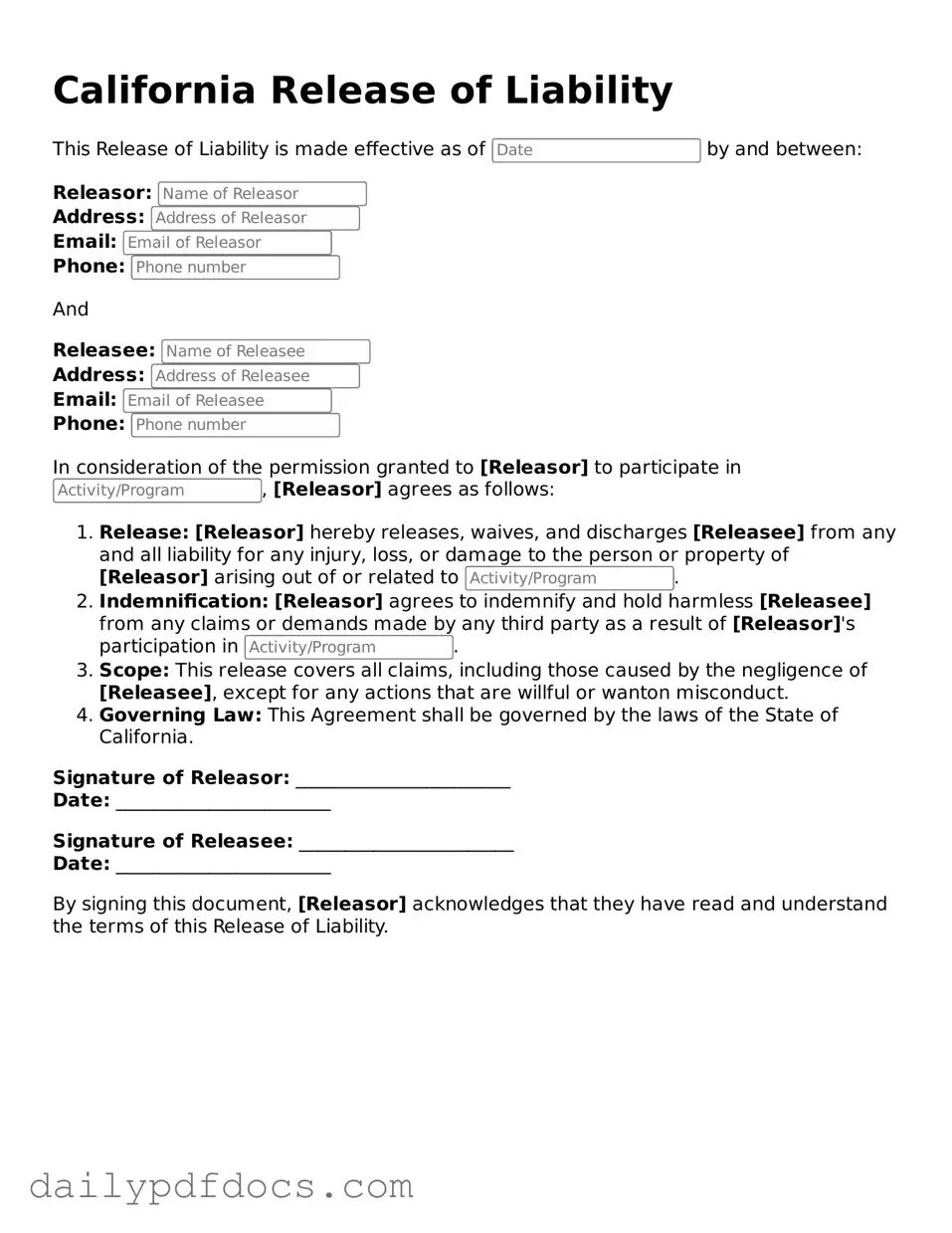What is a California Release of Liability form?
A California Release of Liability form is a legal document that individuals use to waive their right to sue another party for any injuries or damages that may occur during a specific activity. This form is often used in contexts such as sports events, recreational activities, or any situation where there is a risk of injury. By signing this form, participants acknowledge the risks involved and agree not to hold the organizer or provider responsible for any accidents that may happen.
Who should use a Release of Liability form?
This form is beneficial for businesses, organizations, or individuals who host activities that carry inherent risks. For example, outdoor adventure companies, sports leagues, and community organizations often require participants to sign this document. It helps protect them from potential lawsuits while ensuring that participants are aware of the risks they are assuming.
Is a Release of Liability form legally binding in California?
In general, a properly drafted Release of Liability form can be legally binding in California. However, certain conditions must be met for it to be enforceable. The language must be clear, and the risks must be adequately explained. Additionally, the form should not violate public policy or be deemed unconscionable. Courts may scrutinize these forms closely, especially if they involve waiving rights related to gross negligence or intentional misconduct.
Can a minor sign a Release of Liability form?
Minors typically cannot sign legal documents, including a Release of Liability form, without parental consent. In California, a parent or legal guardian usually must sign on behalf of a minor. This ensures that the minor's rights are protected while still allowing them to participate in activities that require such waivers.
What should I consider before signing a Release of Liability form?
Before signing, it is essential to read the document carefully. Understand the risks involved in the activity and the extent of the waiver. Consider whether the form adequately describes the risks and if it seems fair. If you have any concerns, discussing them with the organizer or seeking legal advice may be wise. Remember, signing this form means you are giving up certain legal rights, so it is crucial to make an informed decision.
